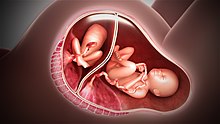
Twins are two offspring produced by the same pregnancy. Twins can be either monozygotic ('identical'), meaning that they develop from one zygote, which splits and forms two embryos, or dizygotic, meaning that each twin develops from a separate egg and each egg is fertilized by its own sperm cell. Since identical twins develop from one zygote, they will share the same sex, while fraternal twins may or may not. In very rare cases twins can have the same mother and different fathers.

Conjoined twins, popularly referred to as Siamese twins, are twins joined in utero. It is a very rare phenomenon, estimated to occur in anywhere between one in 49,000 births to one in 189,000 births, with a somewhat higher incidence in Southwest Asia and Africa. Approximately half are stillborn, and an additional one-third die within 24 hours. Most live births are female, with a ratio of 3:1.

The chorion is the outermost fetal membrane around the embryo in mammals, birds and reptiles (amniotes). It develops from an outer fold on the surface of the yolk sac, which lies outside the zona pellucida, known as the vitelline membrane in other animals. In insects, it is developed by the follicle cells while the egg is in the ovary. Some mollusks also have chorions as part of their eggs. For example, fragile octopus eggs have only a chorion as their envelope.

Craniopagus parasiticus is an extremely rare type of parasitic twinning occurring in about 2 to 3 of 5,000,000 births. In craniopagus parasiticus, a parasitic twin head with an undeveloped body is attached to the head of a developed twin. Fewer than a dozen cases of this type of conjoined twin have been documented in literature.
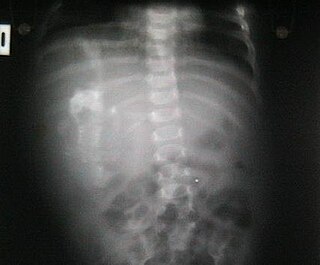
Fetus in fetu is a rare developmental abnormality in which a mass of tissue resembling a fetus forms inside the body of its twin. An early example of the phenomenon was described in 1808 by George William Young.
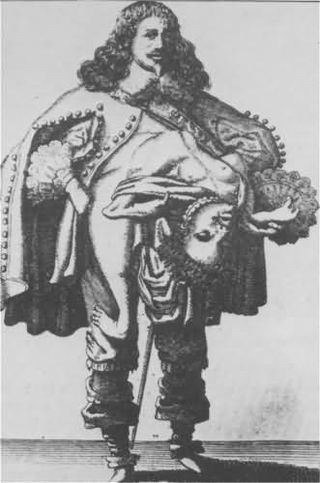
Lazarus Colloredo and Joannes Baptista Colloredo were Italian conjoined twins who toured freak shows in 17th-century Europe. They were born in Genoa, Italy.

Twin-to-twin transfusion syndrome (TTTS), also known as feto-fetal transfusion syndrome (FFTS), twin oligohydramnios-polyhydramnios sequence (TOPS) and stuck twin syndrome, is a complication of monochorionic multiple pregnancies in which there is disproportionate blood supply between the fetuses. This leads to unequal levels of amniotic fluid between each fetus and usually leads to death of the undersupplied twin and, without treatment, usually death or a range of birth defects or disabilities for a surviving twin, such as underdeveloped, damaged or missing limbs, digits or organs, especially cerebral palsy.

Sirenomelia, also called mermaid syndrome, is a rare congenital deformity in which the legs are fused together, giving the appearance of a mermaid's tail, hence the nickname.

Hydrops fetalis or hydrops foetalis is a condition in the fetus characterized by an accumulation of fluid, or edema, in at least two fetal compartments. By comparison, hydrops allantois or hydrops amnion is an accumulation of excessive fluid in the allantoic or amniotic space, respectively.
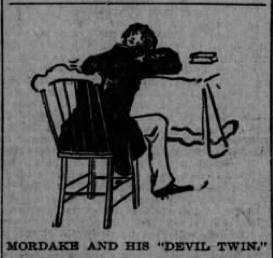
Edward Mordake is the apocryphal subject of an urban legend who was born in the 19th century as the heir to an English peerage with a face at the back of his head. According to legend, the face could whisper, laugh or cry. Mordake repeatedly begged doctors to remove it, claiming it whispered bad things to him at night. Mordake died by suicide at the age of 23.

Polycephaly is the condition of having more than one head. The term is derived from the Greek stems poly meaning "many" and kephalē meaning "head". A polycephalic organism may be thought of as one being with a supernumerary body part, or as two or more beings with a shared body.
A vestigial twin is a form of parasitic twinning, where the parasitic "twin" is so malformed and incomplete that it typically consists entirely of extra limbs or organs. It also can be a complete living being trapped inside the host person, however the parasitic twin is anencephalic and lacks consciousness.

The midgut is the portion of the human embryo from which most of the intestines develop. After it bends around the superior mesenteric artery, it is called the "midgut loop". It comprises the portion of the alimentary canal from the end of the foregut at the opening of the bile duct to the hindgut, about two-thirds of the way through the transverse colon.
In embryology, Carnegie stages are a standardized system of 23 stages used to provide a unified developmental chronology of the vertebrate embryo.
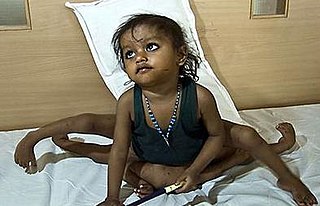
Lakshmi Tatma is an Indian girl born in 2005 in a village in Araria district, Bihar, with four arms and four legs. She was actually one of a pair of ischiopagus conjoined twins, one of which was headless because its head had atrophied and chest had not fully developed in the womb, causing the appearance of one child with four arms and four legs. She has undergone surgery to remove these extra limbs.

Twin reversed arterial perfusion sequence, also called TRAP sequence, TRAPS, or acardiac twinning, is a rare complication of monochorionic twin pregnancies. It is a severe variant of twin-to-twin transfusion syndrome (TTTS). In addition to the twins' blood systems being connected instead of independent, one twin, called the acardiac twin, TRAP fetus or acardius, is severely malformed. The heart is missing or deformed, hence the name "acardiac", as are the upper structures of the body. The legs may be partially present or missing, and internal structures of the torso are often poorly formed. The other twin is usually normal in appearance. The normal twin, called the pump twin, drives blood through both fetuses. It is called "reversed arterial perfusion" because in the acardiac twin the blood flows in a reversed direction.
A fetus or foetus is the unborn offspring that develops from a mammal embryo. Following embryonic development, the fetal stage of development takes place. In human prenatal development, fetal development begins from the ninth week after fertilization and continues until the birth of a newborn. Prenatal development is a continuum, with no clear defining feature distinguishing an embryo from a fetus. However, a fetus is characterized by the presence of all the major body organs, though they will not yet be fully developed and functional and some not yet situated in their final anatomical location.

Dicephalic parapagus is a rare form of partial twinning with two heads side by side on one torso. Infants conjoined this way are sometimes called "two-headed babies" in popular media. The condition is also called parapagus dicephalus.

Monochorionic twins are monozygotic (identical) twins that share the same placenta. If the placenta is shared by more than two twins, these are monochorionic multiples. Monochorionic twins occur in 0.3% of all pregnancies. Seventy-five percent of monozygotic twin pregnancies are monochorionic; the remaining 25% are dichorionic diamniotic. If the placenta divides, this takes place before the third day after fertilization.

An amorphus globosus, also known as a globosus amorphus, or an amorphus globosus monster, is a malformation occurring in veterinary medicine, especially in domestic cattle. Instead of a normally developed fetus, it results in the formation of a more or less spherical structure covered with hairy skin, which contains parts of all three germ layers; the differentiation of its contents can vary greatly. An amorphus globosus is not viable due to the lack of functional organs.

